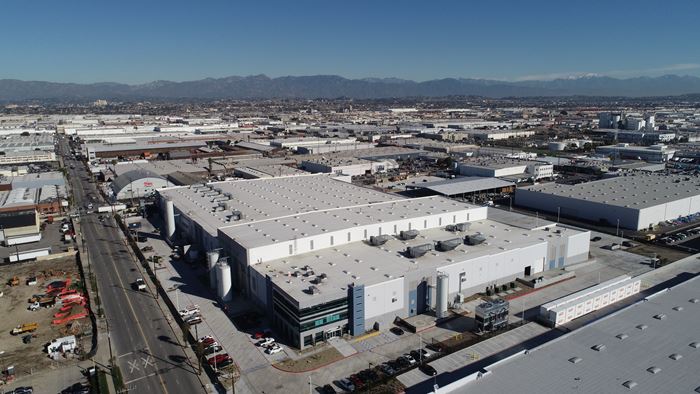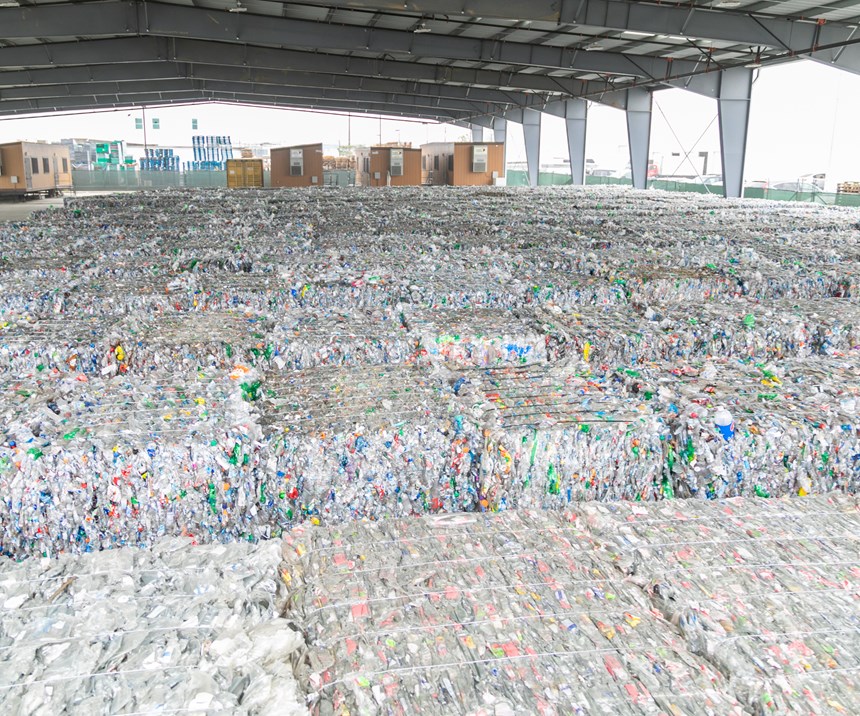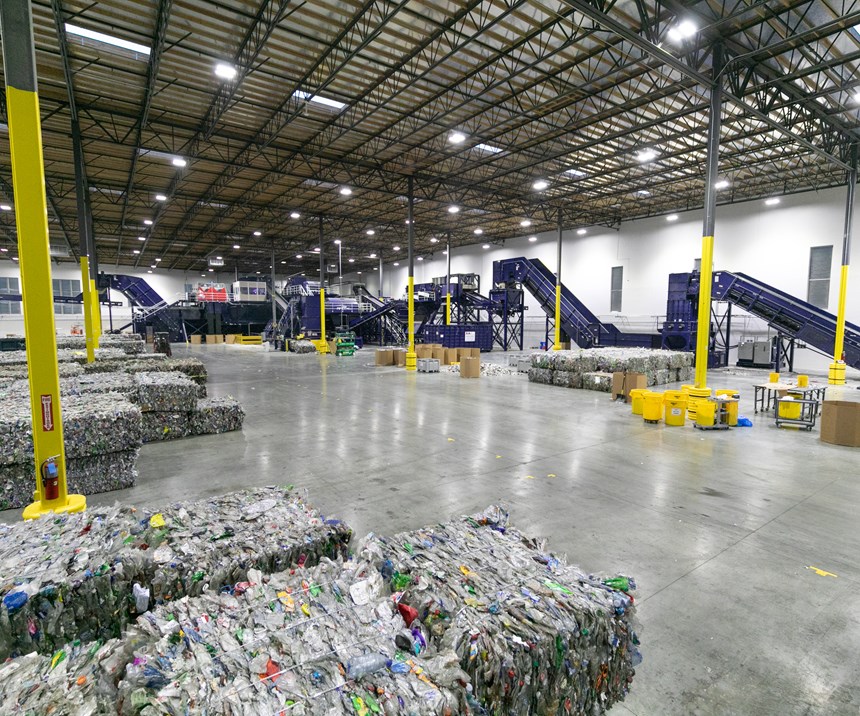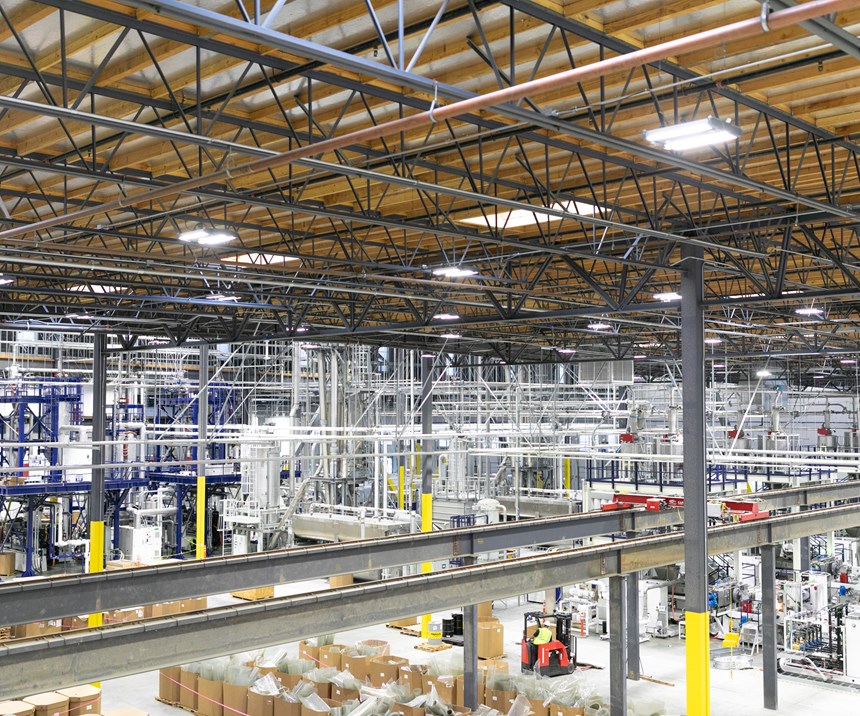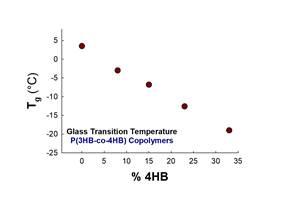While the U.S. is a leader in many fields, there’s one glaring omission: recycling. You’ve seen the headlines about the state of the U.S. recycling market—by all accounts, it appears bleak since China banned plastic waste imports. Several communities across the country have cut back on curbside recycling programs. But it’s not all doom and gloom. This shift is forcing companies to come up with new solutions to get more waste recycled here in the U.S.
Case in point: rPlanet Earth in California. The company seeks to become a leader in creating a closed-loop system for recycling and reuse of post-consumer plastics. rPlanet Earth sees the U.S. as an emerging market for sustainability. Recycling rates around the world for developed countries are much higher than our reported rate of about 30%, suggesting that innovation is needed now to help boost recycling activity.
“We have a long way to go to catch up to other countries— the U.S. is far behind much of the developed world in terms of reusing its very valuable post-consumer commodities,” says rPlanet Earth co-CEO Robert Daviduk.
rPlanet Earth looks to make a big impact on the market with its “world’s first” vertically integrated plant for converting PET packaging waste into recycled-PET (rPET) packaging products with properties reportedly comparable to those made from virgin PET. The company’s story is a combination of timing, location, ingenuity and drive—all to establish a “new normal” for recycling.
THE START
rPlanet Earth was co-founded by Bob Daviduk and Joe Ross. Ross is a packaging engineer by trade and his background includes the design, manufacture and sale of packaging for food and beverage products. He has founded and led several companies in this space. Daviduk’s background is in finance and he has worked in leadership positions at several large financial services companies.
Ross saw there was too much plastic packaging that should be reused to make new material instead of going into landfills. “After conducting much research, we found a tremendous demand for high-quality, high-rPET-content packaging in the marketplace,” Daviduk says. “We set out and developed a business plan and raised money. We found the right plant location, selected contractors, picked equipment vendors, designed a very complex facility and started construction a couple years ago.”
Last year, the company opened its 302,000 ft2 facility in Vernon, Calif. The total investment at Vernon thus far is more than $100 million.
California was the right place for the company’s first location for several reasons, the biggest being its large population that generates a tremendous volume of post-consumer PET collected through the state’s bottle bill and curbside collection programs. The California Redemption Value (CRV) serves as a key aspect of the bottle bill program—this is the amount paid to consumers when they recycle beverage containers at certified recycling centers, according to the CalRecycle government website. The minimum refund value established for each type of eligible beverage container is 5ȼ for containers under 24 oz and 10ȼ for containers of 24 oz or greater. CalRecycle reported an overall container recycling rate of 75% in 2017.
rPlanet Earth plans to use primarily curbside post-consumer PET that can be supplemented with material collected through the CRV program. This means a large amount of material is available for rPlanet Earth to process in California.
The new rPlanet Earth plant has an annual capacity of about 80 million lb. It produces three primary value streams—extruded sheet, thermoformed containers and bottle preforms.
THE PROCESS
rPlanet Earth is focused on an efficient closed-loop process. “By locating the entire recycling and packaging manufacturing process under a single roof and removing unnecessary and energy-intensive production steps, our packaging has an extremely low carbon footprint – much lower than anything else in the marketplace today,” Daviduk says.
The facility takes in bottles, clamshell containers and other packaging waste and puts it through an extensive series of processing steps. After bales entering the rPlanet Earth facility have been broken into a single stream of bottles and thermoforms, the material is subjected to multiple sorting procedures. Magnetized sorters remove foreign matter such as ferrous metals and wire; eddy currents remove non-ferrous metals; while near-infrared scanners identify PET and separate it from other polymers; and another sorting step separates PET materials by color.
Next comes a system for grinding the material into flake. Water is avoided until late in the sorting and grinding process, when labels have been removed because they can release inks and solvents that can negatively affect the quality of the finished rPET. Once the flake moves to the wash line it is cleaned before it moves to a tank where PET, which is heavier than water, sinks, while remaining caps and other matter are skimmed off. Subsequently, the flake enters a Krones MetaPure reactor where heat (around 392 F) and vacuum are used in a final decontamination process. Solid-state polymerization (SSP) in the reactor raises the IV of the rPET to various levels, depending on the target application.
rPlanet Earth bypasses the pelletizing step in favor of adding value to flake by using it in its own in-house plastics processing lines. “By skipping the pelletizing of rPET we potentially avoid degrading our products’ appearance, since a melting step that can negatively affect color is eliminated,” Daviduk says. “Our customers are looking for products that come from a truly closed-loop recycling system.” He noted that rPlanet Earth can supply sheet, thermoformed packaging, or bottle preforms whose rPET content can range up to 100%, depending on whether a customer requires some percentage of virgin PET.
The company currently operates seven processing lines. Two Husky injection molding systems produce preforms, and three Welex extrusion lines produce sheet for sale as rollstock or for use in-house on two Lyle thermoforming machines. The thermoformed products manufactured by rPlanet Earth can include drinking cups, produce packaging, clamshell containers and virtually any other food-grade thermoformed packaging currently made from PET.
The three Welex sheet lines, supplied by Graham Engineering, include extruders that yield sheet widths up to 75 in. and can be configured for coextrusion. They also have XSL Navigator controls capable of integrating with plant-wide automation systems; Nordson’s BKG HiCon screen changers, BlueFlow gear pumps, and static mixers; and Nordson EDI Ultraflex sheet dies. Graham Engineering also supplied thickness scanners, edge-trim systems, winders, and other equipment.
Daviduk believes the company’s material is an equal substitution for virgin material. Every time PET is heated, it degrades a bit and cause yellowing. A key aspect of rPlanet’s process is removing any unnecessary heating step to minimize its impact.
Daviduk says that the company’s Phase II expansion plans are basically a parallel of Phase I and will establish a similar line for processing raw waste material to finished packaging. Upon completion, this expansion will make this the largest plant in the world by volume of rPET packaging production.
THE LANDSCAPE
It seems that every day there is a new announcement from brands setting targets to ensure their packaging will be recyclable and to incorporate more recycled material into their products. PepsiCo has a goal for 25% recycled and renewable content in its plastic packaging by 2025. The goal includes a specific aim to achieve 33% recycled and renewable content in PepsiCo’s PET beverage bottles by 2025 in the U.S.
Likewise, as part of its “Ambition 2030” Project, Procter & Gamble pledged to make all its packaging recyclable or reusable by 2025. Nestle Waters has one of the most ambitious sustainability initiatives, which aims to achieve 25% recycled plastic across its portfolio by 2021, 50% by 2025 and 100% recycled or renewable PET by 2030.
Meeting all those goals will require a lot of rPET. Where will it come from? Daviduk says that purchasing rPET from overseas to be used in the U.S. does not help create a truly closed-loop sustainable system. “We know there is some post-consumer material that gets imported from overseas with brands making recycled-content claims around post-consumer PET collected in places such as Asia and Central and South America,” he says. “The solution should be a closed-loop process developed in the U.S.—the material should be collected and recycled in the U.S. to be used in packaging products in the U.S. instead of importing overseas recycled flake or pellet that ends up in packaging on store shelves and then in the landfill. That is not sustainable.”
But there’s still the issue of lack of collection in the U.S. Only 6% of the total amount of PET bottles produced are recycled back to bottle-grade quality and used to produce new bottles. The demand for direct-contact food-grade rPET far exceeds supply and at times has caused rPET to sell at a price premium over virgin bottle-grade PET.
Collection and recycling rates will have to increase significantly to enable brand owners to achieve their commitments for increasing recycled content in their packaging. In the U.S., Daviduk says it will most likely require public-policy changes and legislation to promote a meaningful improvement in collection rates, since the current system has failed to do so.
The company’s big plan is to build several more similar plants across the U.S. to establish the first fully integrated, coast-to-coast network of manufacturing facilities to reuse post-consumer waste to create high-quality rPET packaging. Daviduk says they plan to locate these plants in population centers where material is collected and their customers operate so they can provide national and regional brands with high-quality, reliable and consistent supply of rPET packaging that can be used in direct food contact, cosmetics, healthcare, personal care and other applications.
“Necessity is the mother of invention and it’s going to be true in the U.S.,” Daviduk says. “In the past, the recycling industry was fragmented—with us, it’s all under a single roof. This eliminates cost, makes us more efficient and allows us to control quality at every production step.”
Related Content
Breaking News From NPE2024
Here is a firsthand report of news in injection molding, extrusion, blow molding and recycling not previously covered.
Read MoreMultilayer Solutions to Challenges in Blow Molding with PCR
For extrusion blow molders, challenges of price and availability of postconsumer recycled resins can be addressed with a variety of multilayer technologies, which also offer solutions to issues with color, processability, mechanical properties and chemical migration in PCR materials.
Read MoreFilm Extrusion: Boost Mechanical Properties and Rate of Composting by Blending Amorphous PHA into PLA
A unique amorphous PHA has been shown to enhance the mechanical performance and accelerate the biodegradation of other compostable polymers PLA in blown film.
Read MoreHow to Optimize Injection Molding of PHA and PHA/PLA Blends
Here are processing guidelines aimed at both getting the PHA resin into the process without degrading it, and reducing residence time at melt temperatures.
Read MoreRead Next
Beyond Prototypes: 8 Ways the Plastics Industry Is Using 3D Printing
Plastics processors are finding applications for 3D printing around the plant and across the supply chain. Here are 8 examples to look for at NPE2024.
Read MoreMaking the Circular Economy a Reality
Driven by brand owner demands and new worldwide legislation, the entire supply chain is working toward the shift to circularity, with some evidence the circular economy has already begun.
Read MoreLead the Conversation, Change the Conversation
Coverage of single-use plastics can be both misleading and demoralizing. Here are 10 tips for changing the perception of the plastics industry at your company and in your community.
Read More


